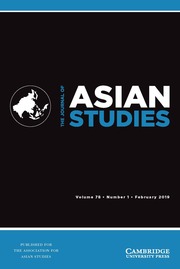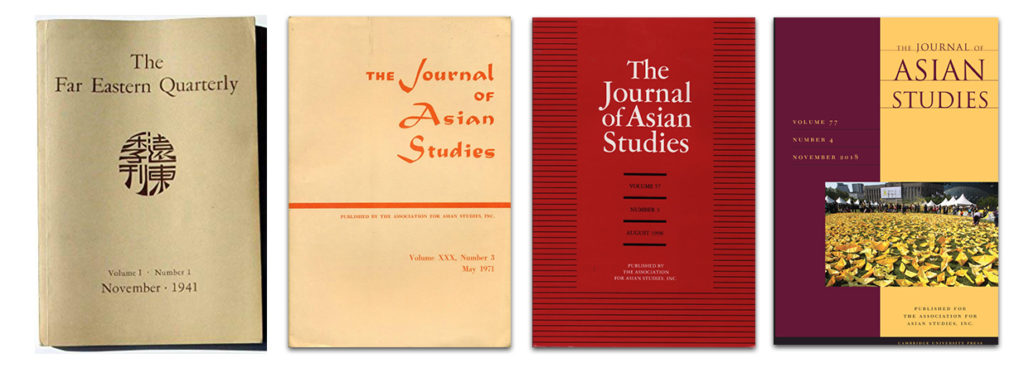
The February 2019 issue of the Journal of Asian Studies has been published and is available online at Cambridge Core, with free open access until April 15. This is the first issue released under new JAS editor Vinayak Chaturvedi (University of California, Irvine), and readers familiar with the JAS will immediately notice that the journal has a new look. Below, Dr. Chaturvedi explains the redesign of the journal’s appearance and also answers some other frequently asked questions he has heard in his first eight months as JAS editor.
For regular updates, please follow the JAS on Facebook and Twitter.
What are some changes to the JAS?
The February 2019 issue of the JAS (volume 78.1) introduces a new cover with new colors. The designers at Cambridge University Press worked hard to come up with a contemporary design with a new font and matte finish. The color of the paper is now white, a change from the earlier ivory color paper. The JAS has had three covers in the past—four if you count the original cover of the Far Eastern Quarterly, which was the name of the journal till 1956.

There is also some reorganization inside the journal. The Book Review Section is now organized under the headings of “China and Inner Asia,” “Northeast Asia,” “South Asia,” “Southeast Asia,” and “Transnational and Comparative Asia,” rather than some regional headings, and other national headings. The “Table of Contents” also has a different look as well. We hope to introduce additional new features in future issues.
Do you prefer specific types of articles?
As I mention in my “Editorial Foreword,” my main priority is to publish excellent scholarship across the many areas, disciplines, and methodological approaches that make up Asian Studies for all periods of time. I see this as an opportunity for scholars to submit a diverse range of research. I would encourage readers to have a look at the foreword, as it serves as a call for papers, especially in expanding the theoretical and methodological approaches to interpreting “Asia” in its multiple meanings and interpretations—geographically and epistemologically.
The May issue will include a section called “Forum.” The purpose of this section is to publish a cluster of three or four articles on a particular theme, topic, book, event, or idea. I hope to include two or three forums in every volume of the JAS. These pieces do not have to be the same length as an article, so there is some flexibility in the presentation of the research.
How quickly are articles reviewed? Does the JAS have a backlog?
This is an excellent time for authors to submit articles to the JAS, as we do not have a backlog. Since starting in July 2018, I have worked with the Editorial Board to speed up the peer-review process. I think it is only fair to be transparent with authors and readers of the journal about the situation and the current review process. I normally review all articles within one week of submission, and Associate Editors review select articles within two weeks. If the Board determines that an article is not a good fit for the JAS, authors are generally informed within two weeks of submission. Articles that receive the approval of the Board are then sent to two or three additional reviewers. I ask that these reviewers submit their comments within 4 weeks. When everything moves smoothly, we have been able to return the first round of comments to authors within 8 weeks from the date of submission. On average, I would say it takes around 12 weeks. But, of course, sometimes there are unexpected delays.
How quickly is an article published after it is accepted?
Once an article is accepted, it goes to the copyeditor and production editor. The process is actually pretty quick at this point. In order to make sure that the article is available to readers as soon as it is ready, Cambridge University Press places the article in “FirstView” on its website, which means that the article can be read online before it is actually printed.
What activities has the JAS organized at the AAS annual conference in Denver?
On Friday, March 22, we have organized a roundtable to discuss the posthumous publication of C.A. Bayly’s Remaking of the Modern World and its impact on Asian Studies. The panelists include Robert Travers, Antoinette Burton, R. Bin Wong, Sunil Amrith, and Sandria Freitag.
On Saturday, March 23, from 1:00 to 2:00PM, please join us at the Cambridge University Press booth (#304 in the Exhibit Hall) for a “Meet the Editors” event. We will be happy to meet colleagues to discuss their ideas.

